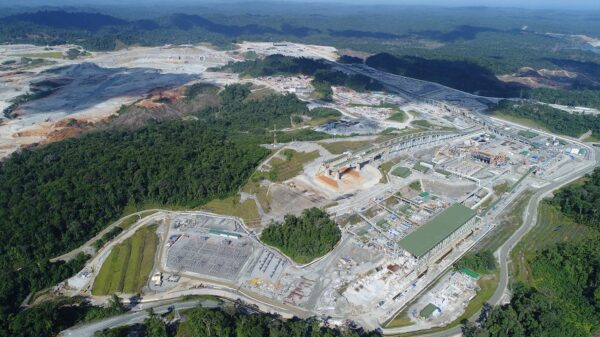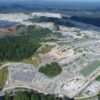Recent results from a Nevada based study performed by the Arid Land Research Fund (ALRF) found environmental contamination to be the culprit in ecosystem degradation, leading to desertification.
West Vault Mining (TSXV: WVM) (OTCX: WVMDF) provided an update on work completed by the Arid Land Research Fund (ALRF) under the direction of the University of Nevada Reno (UNR).
Originally conceived by West Vault in April 2022 as a cost-effective way to improve the environment, the ALRF’s purpose is to analyze the factors that lead to desertification and find ways to stop it. Desertification has become a major problem in the United States west coast, and all over the world. Desertification is land degradation in arid, semi-arid, and dry sub-humid areas from many factors, including both human activities and climatic changes.
“We initiated the fund because we wanted to go beyond just talking about ESG – we wanted to do something very real which would generate meaningful and measurable results, not just check the ESG box. We chose UNR as we know they will get solid results – they have an impressive track-record in this field,” said West Vault’s CEO, Sandy McVey.
The company has recruited a group of Nevada-based mining companies to support the work and broaden the effectiveness of the research. The ALRF actually gets financially support from this group, and some of the research happens on the sponsors’ mine properties.
At this time, four mining companies have come forward to sponsor this important work, each contributing US $20,000 in cash.
These companies are:
- American Lithium (NASDAQ: AMLI)
- Cypress Development (TSXV: CYP)
- Fortitude Gold (NASDAQ: FTCO)
- West Vault Mining
Read more: Calibre releases short doc on environmental initiatives in Nicaragua
Read more: Calibre Mining strengthens management team with two new vice presidents
The Arid Land Research Fund presents new techniques for old problems
The program is led by Professor Tamzen Stringham of UNR.
According to the Natural Resource Conservation Service, the average per acre production of Indian ricegrass for the area should have been 143 pounds. Expanded over a year and that’s over a billion pounds. That’s enough forage to feed 1.5 million head of cattle for a year.
Specifically, Stringham gives the example of the Tonopah in the Caliente area in Nevada. Here 7.3 million acres of rangeland had an understory of Indian ricegrass at one point.
Data collected by Stringham indicates the majority of these acres no longer support an understory of Indian ricegrass. In ecology, an understory is the plant life living beneath the forest canopy. Indian ricegrass is the primary food source of cattle and is an early casualty of overgrazing.

Demonstrating response to pinyon tree removal and grazing management. Image via West Vault Mining.
The loss of the grass understory reduces many ecosystem services such as carbon sequestration, forage production, wildlife habitat, and soil stabilization.
“It focuses on seeding techniques and measuring the effect of adding coatings to Indian ricegrass seeds to promote germination and propagation of this important native grass.
Indian rice grass is indigenous to the US West but settlement has all but eradicated it – re-establishing it would be an extremely important step in pushing back desertification,” said Stringham.
Read more: Calibre Mining gold discovery could breathe life into historic mining community
Read more: Calibre Mining finds robust drill results from Golden Eagle project
Newcrest takes its ESG commitments seriously

Cyanide heap leach pile collapse in Costa Rica. Image by CEUS del Golfo via Flickr.
Certain mining processes are also responsible for environmental degradation, and one of the main culprits is heap leaching.
Heap leaching is a process used to separate precious metals, like copper, uranium and gold, from ore. It uses a series of chemical reactions, which absorb specific minerals and separate them from from other earth minerals.
The most common chemicals used include cyanide and sulfuric acid. The leftover chemicals from this process can have widespread ecological consequences.
Heap leach operations release toxic chemicals into the air, water, and soil. These destroy natural habitats, and contaminate groundwater with heavy metals. Also, it can cause acid mine drainage, leading to acidification of nearby streams and rivers. Finally, heap leaching can cause soil erosion, leading to topsoil loss and vegetation destruction.
West Vault Mining shares are down $0.04 and trading at $0.90 on the TSX Venture Exchange.
Leaders in ESG Anglo American (LSE: AAL), Fortescue Metals (ASX: FMG), BHP (ASX: BHP), Newcrest (TSX: NCM), Newmont (TSX: NGT) and Gold Fields (NYSE: GFI), according to GlobalData’s research report, ESG in Mining.
Newcrest has taken a number of steps to improve its ESG performance. These include arranging a comprehensive ESG strategy that follows the company’s commitment to responsible mining and sustainable development.
Additionally, the company has established a dedicated ESG team to keep its operations running in a socially responsible manner.
The company has also implemented an ESG management system to monitor and support its performance against ESG objectives.
Beyond internal organization, it’s established a community engagement program ensuring local communities are not only kept aware, but consulted in the company’s operations.
Follow Joseph Morton on Twitter
joseph@mugglehead.com














